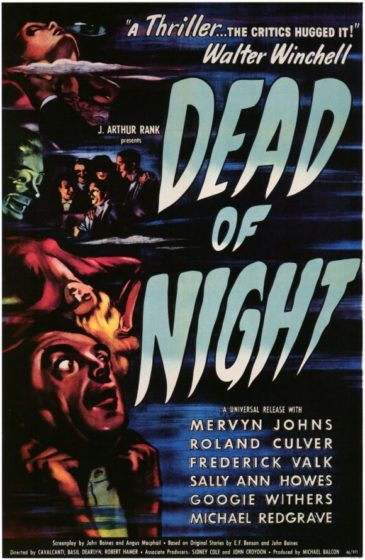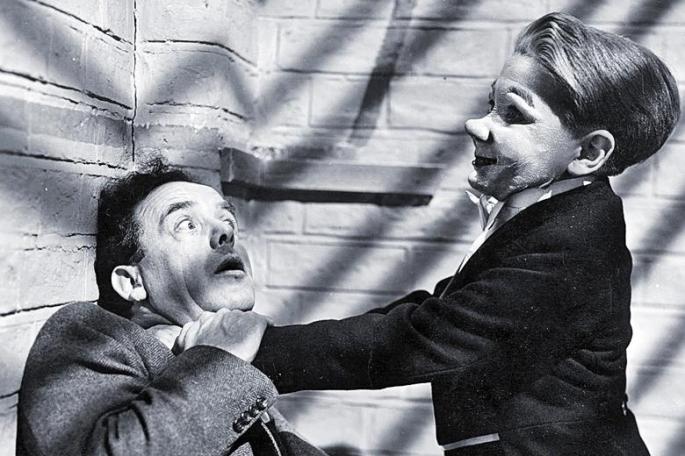
The anthology film Dead of Night (1945) has an insidiously unsettling quality which sinks slowly into you, seemingly out of nowhere, but stretching into your veins like a virus. Quite literally, watching it is to step into a nightmare, one that has already been unfolding and which will continue long after you walk away from the film. That’s both the plot and the film’s method, one that builds upon classic British ghost stories and anticipates the paranoid reality breakdowns of The Twilight Zone. Yet it’s all handled – until the final reel – with such reserve that you never see the full effect coming. Produced by the storied Ealing Studios, still best known for its classic comedies, Dead of Night boasts four directors but a clarity of vision and shared purpose: Basil Dearden (They Came to a City), Cavalcanti (aka Alberto Cavalcanti, Champagne Charlie), Robert Hamer (Kind Hearts and Coronets), and Charles Crichton (The Lavender Hill Mob). Produced during a decade in which the British horror genre was slumbering, it was released wide in the U.K. a couple weeks prior to Halloween, and it ultimately left its mark as one of the greatest horror anthologies of all time.
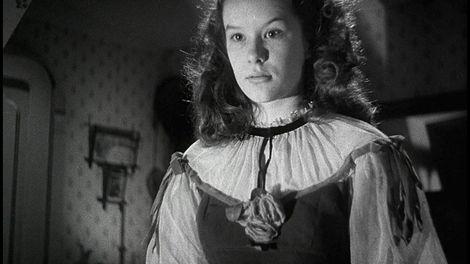
Sally Ann Howes in “The Christmas Party” segment of Dead of Night.
The framing story is certainly one of the best of its kind; the genre is not exactly known for its solid linking tales, which are often perfunctory or clichéd. Walter Craig (Mervyn Johns, The Day of the Triffids) is summoned to a country manor to consult on some renovations. Upon arriving and encountering those already gathered there, he begins suffering a dreadful déjà vu. He had a just-remembered nightmare which contained all the details he’s now experiencing. He’s able to predict what will happen next with accuracy, though how it will all end – the nightmare part which he begins to dread – is a confusion of contradictory and violent memories. While his situation is clinically refuted by a psychologist, Dr. Van Straaten (Frederick Valk, Night Train to Munich), the other guests begin recounting their own uncanny encounters to bolster Walter’s trepidations. In the first tale, Dearden’s “The Hearse Driver” (based on “The Bus-Conductor” by E.F. Benson), a race-car driver (Anthony Baird) experiences a frightening vision in the middle of the night which reveals itself to be a life-saving premonition. In the second, Cavalcanti’s “The Christmas Party,” teenager Sally O’Hara (Sally Ann Howes, Chitty Chitty Bang Bang) unwittingly encounters the ghost of a child in an isolated room during a game of hide-and-seek. Both of these first tales are brief and to-the-point, delivering basic but effective twists. Sally, upon learning that the boy she met was the victim of a fratricide some years ago, immediately proclaims “I’m not scared! I’m not scared!” to no one at all, reverting to a state of childhood terror. But although the Benson adaptation, with the ghostly hearse-driver’s cry of “Room for one more, sir,” would prove a lasting ghost tale, there is nothing in either to make Dead of Night a classic. Then the film kicks into a more inspired mode, as though it were simply laying the groundwork before moving into more complex and original variations.
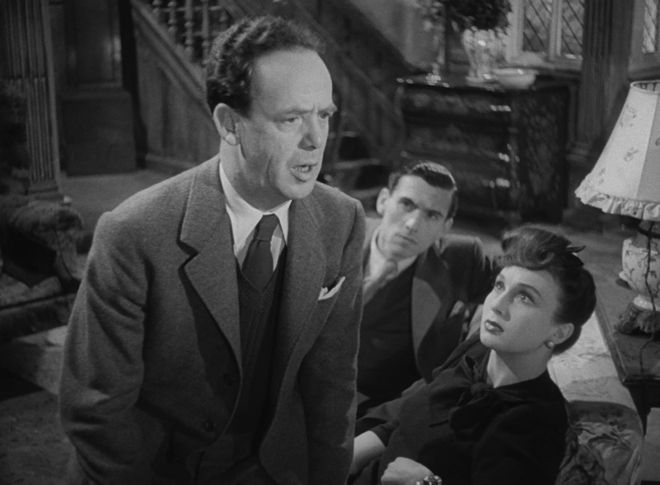
Mervyn Johns tells of his recurring nightmares to the gathered guests.
There is Hamer and screenwriter Angus MacPhail’s story of a haunted mirror which is not told by the one who is haunted by it, but his wife (thus introducing an element new to this anthology thus far – that the victim of these haunted happenings might die). Screenwriter John Baines’ original story follows a married couple whose lives are nearly destroyed by the introduction of a mirror acquired in an antiques shop. When the husband (Ralph Michael) gazes into it, he sees himself in another room, with a burning fireplace and a four-poster bed. Increasingly he’s unable to see anything but this mirror-world, and begins to go unraveled. His wife (Googie Withers, The Lady Vanishes) learns that it belonged to a man who strangled his wife, a past that might soon be relived. This effective horror tale is more sinister than those which came before it, and seems to have directly inspired some Amicus anthologies in decades to come. A respite follows for the more faint-hearted members of the audience, in a story adapted from H.G. Wells’ “The Story of the Inexperienced Ghost” and directed by Crichton, the Ealing director whose gifts for farce would, many years on, lead him to direct A Fish Called Wanda (1988). Two friendly rivals whose lives are entirely devoted to golfing find themselves in the middle of a love triangle, and decide to settle it on the green. When one man cheats, the other nobly drowns himself in a water hazard, only to come back to haunt him. Crichton, as an in-joke using two actors from The Lady Vanishes (Basil Radford and Naunton Wayne) playing similar single-minded characters (with golf substituted for cricket), escalates the extreme nature of their rivalry while retaining a level of indifferent deadpan. A sustained shot in which the two realize that a woman has come between them – while she (Peggy Bryan) is physically sitting between them – and resolve to play a game of life and death for her, is all the funnier because of their prize’s cheerful agreement. Eventually it ventures into ghost-comedy territory well trod by the likes of René Clair’s The Ghost Goes West (1935), Topper (1937), and both the Noël Coward play and David Lean film of Blithe Spirit (1945), but none of those sports this many golf jokes.
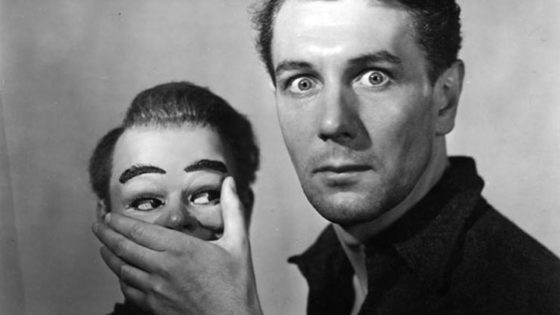
Michael Redgrave and Hugo the dummy.
Finally we reach the installment that everyone who sees Dead of Night remembers with a shudder, the tale of a ventriloquist, Maxwell (Michael Redgrave), whose wicked doll Hugo seems to be the one that’s really in charge of their career. When Hugo begins to make overtures to another ventriloquist, the drunken and depressed Maxwell goes insane. This segment stands on the shoulders of the Erich von Stroheim-starring The Great Gabbo (1929, from a story by Ben Hecht) and prefigures similar takes by The Twilight Zone (twice) and the films Devil Doll (1964) and Magic (1978), among many others. Still, it’s one of the best of its kind, aided by the brevity granted by the anthology format and a lived-in performance by Redgrave, along with an eerie denouement. But Dead of Night has one last trick up its sleeve, a final supernatural rug-pull that begins with a murder, accelerates into a stream-of-consciousness nightmare that collapses the scariest moments of the preceding tales into manic reenactment, and finally reveals the logic behind the architect’s premonitions of disaster. The British own the ghost story format. In a 1945, Dead of Night became a key part of that legacy.
